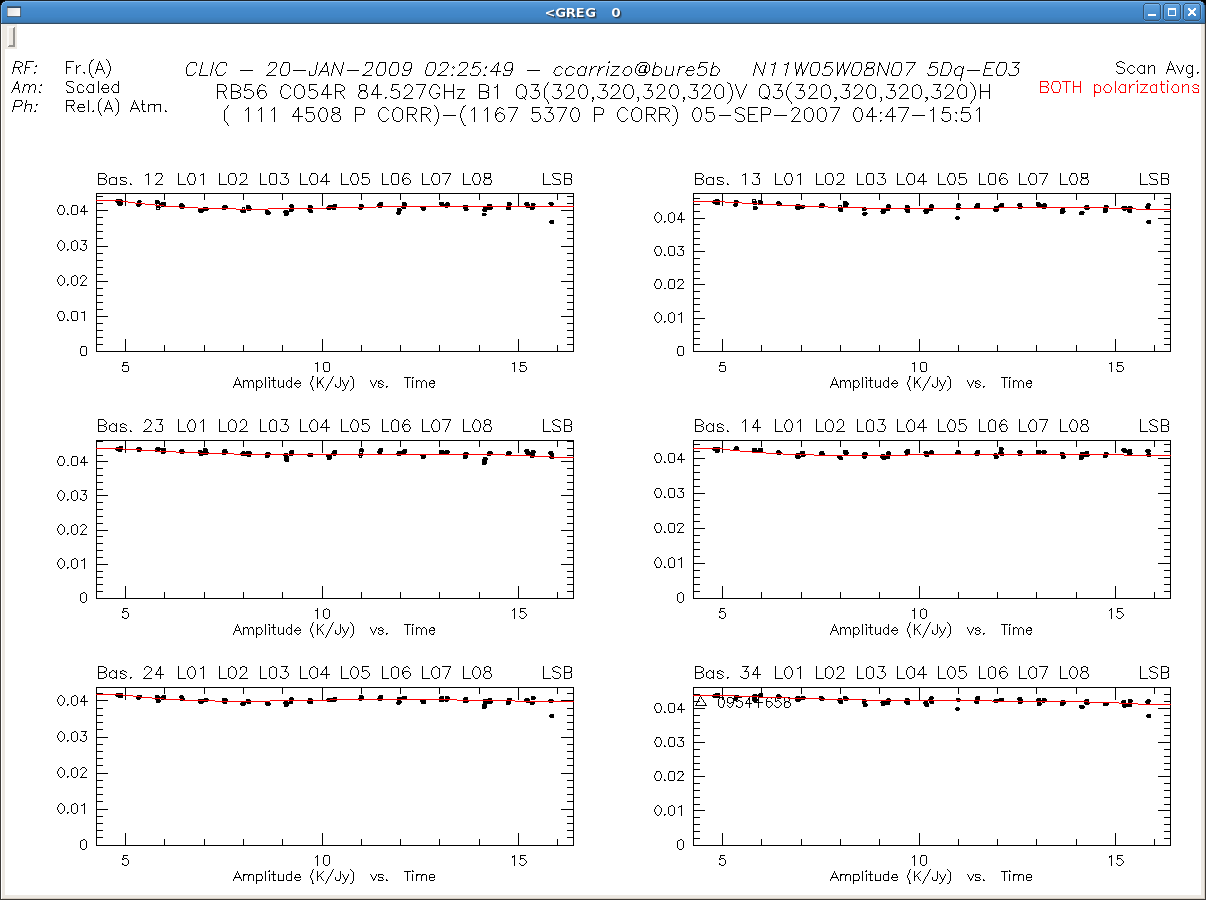![[*]](crossref.png) . Scaled amplitudes are plotted, so we can verify
that the flux calibration, in relative terms, was correct.
. Scaled amplitudes are plotted, so we can verify
that the flux calibration, in relative terms, was correct.
The amplitude calibration is similar to the phase calibration in its
concept: fitting and removing the amplitude changes observed in the
calibrators along the track. The command to be used is ``solve
amplitude'' with the same options as for the phase calibration, in
Sect. ![[*]](crossref.png) . Scaled amplitudes are plotted, so we can verify
that the flux calibration, in relative terms, was correct.
. Scaled amplitudes are plotted, so we can verify
that the flux calibration, in relative terms, was correct.
Sometimes we find complementary (between polarization V and H)
variations of the amplitudes in time, indicating that the calibrator
emission is polarized (see Figure ![[*]](crossref.png) ). The amplitudes of
both polarizations should be then averaged to cancel such variations
(see Figure
). The amplitudes of
both polarizations should be then averaged to cancel such variations
(see Figure ![[*]](crossref.png) ). By typing in the line of commands ``let
do_avpol yes'' the amplitude calibration is performed in the
average mode. At the end of the PhCor procedure an assessment on
the polarization of the phase calibrators is performed (if not done
before, for instance by the pipeline), and the variable do_avpol is set accordintly.
). By typing in the line of commands ``let
do_avpol yes'' the amplitude calibration is performed in the
average mode. At the end of the PhCor procedure an assessment on
the polarization of the phase calibrators is performed (if not done
before, for instance by the pipeline), and the variable do_avpol is set accordintly.

|
The amplitude calibration procedure presents similar characteristics
and problems to those described for the phase calibration, in the
paragraphs with italic-fonts in Sect. ![[*]](crossref.png) .
.
In addition, pointing and focus problems do often result in amplitude losses, mainly at higher frequencies, when the primary beam is smaller. A proper fit of the amplitudes affected by these problems may allow to correct for it; note that this is only valid if the source emission is expected to be centered and compact. We should also consider the proximity of the source to the calibrator(s).